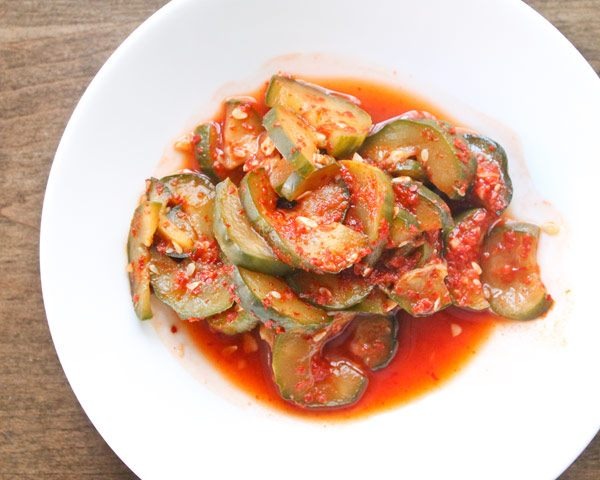Kimchi Craze: How To Pickle Almost Anything, Kimchi Style
Leaf through Roy Choi or David Chang's cookbooks, and readers in the know will flip automatically to their recipes for kimchi. The fermented, pickled cabbage, a staple in plenty of Korean dishes, is what added zing to Choi's Korean-Mexican tacos and Chang's pork butt bo ssäm.
Traditionally, kimchi was prepared with Korean cabbage that was washed and brined in salt before mixing it with red pepper powder, garlic, ginger, green onions, and other spices and seasonings. In the old days, the kimchi was then fermented for three to four months; kimchi was prepared in the early winter, and pots were buried underground to preserve and ferment.
Despite kimchi's association with intimidating adjectives like "fermented," and "pickled," quick kimchi is fairly easy to make, and it's not just napa cabbage in traditional Korean settings. Chef Jesse Schenker at Recette serves a quick-pickled kimchi cucumber with grilled cobia and crème fraîche, and Larry LaValley at 3800 Ocean in Palm Beach, Fla., serves a kimchi tasting, with hearts of palm, cucumbers, and the classic napa cabbage. "For a chef, it is such a versatile ingredient in so many ways," LaValley said. "Add it to stews, soups, or just eat it by itself." And as anyone who has had kimchi fried rice knows, it's excellent with all sorts of leftovers.
The kimchi seasoning is fairly adaptable as well. "You can make it hot and sweet [or] hot and sour," LaValley said. Simply adjust the levels of sugar, Korean chili powder, and other seasonings to your liking, and toss with your preferred vegetables. "You can add the seasoning to almost anything," Schenker said. "But with heartier ingredients, like cabbage, you want to pickle it a little longer."
Learn how to make quick-pickled kimchi cucumbers from Schenker in our slideshow, then check out these recipes for kimchi heart of palms, and classic spicy kimchi.
